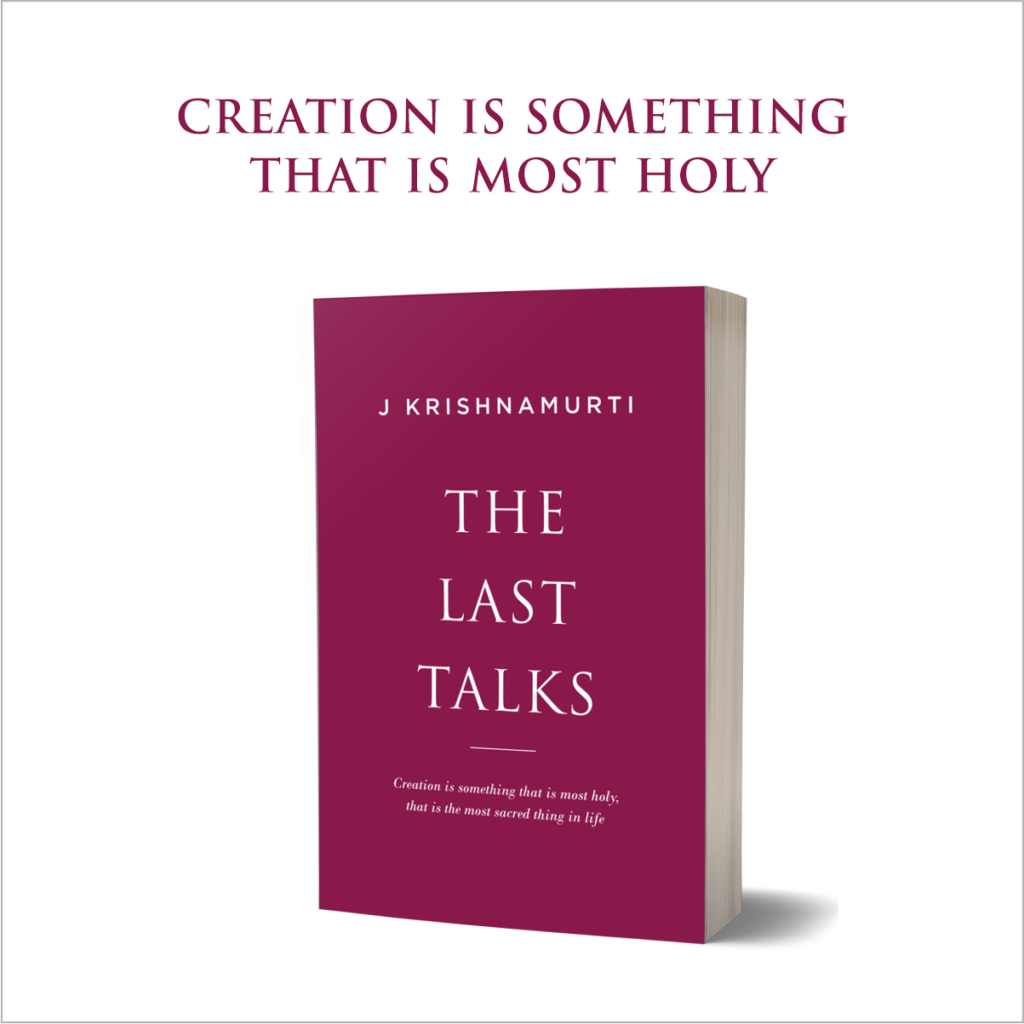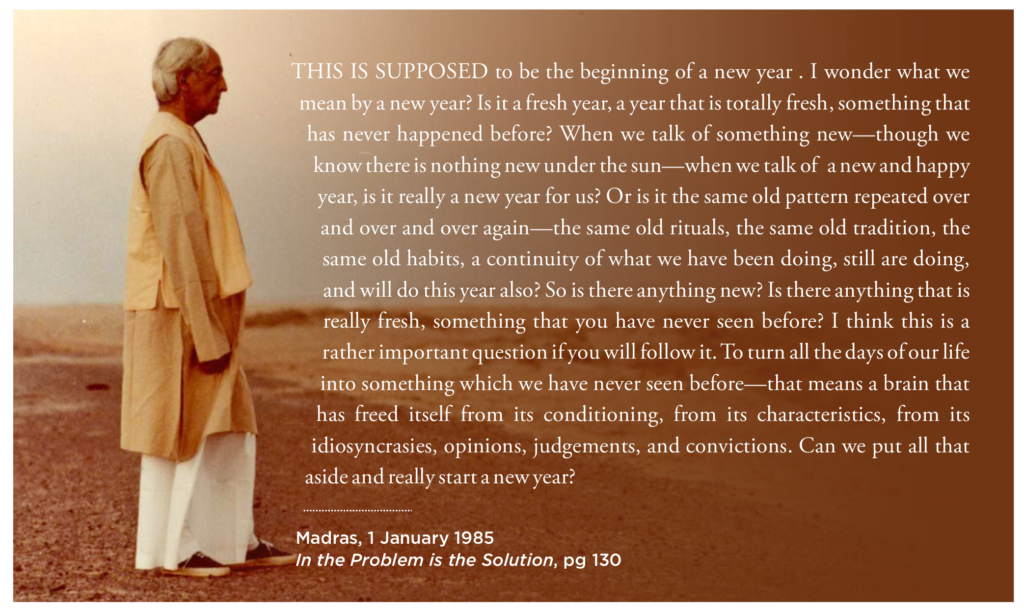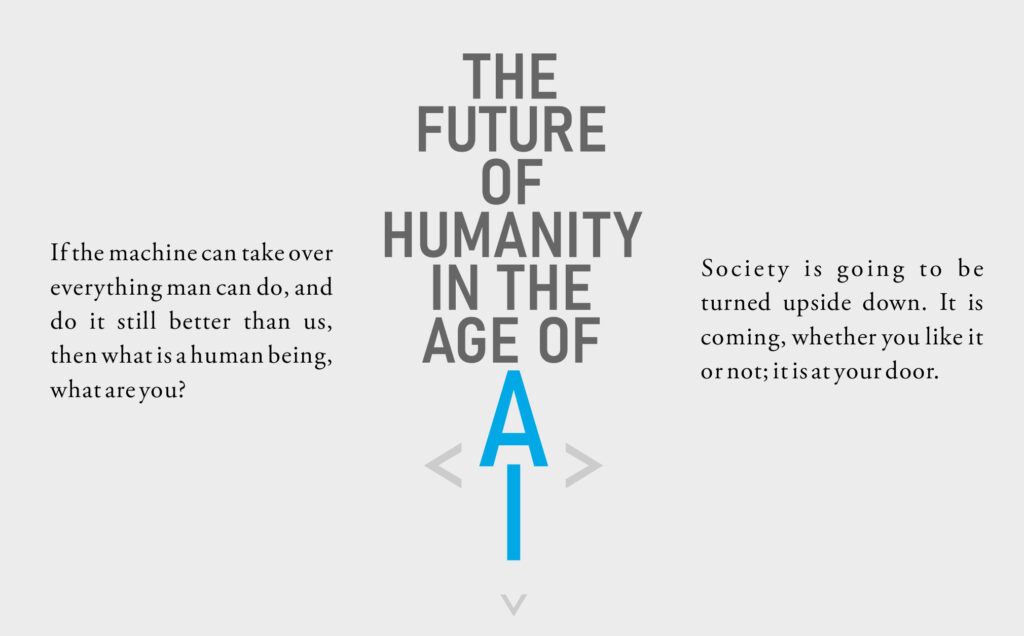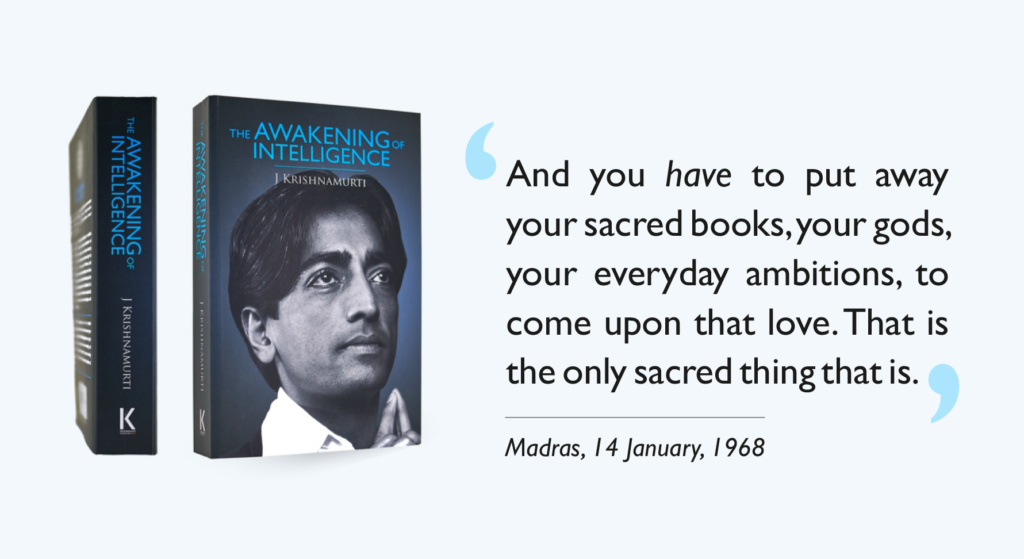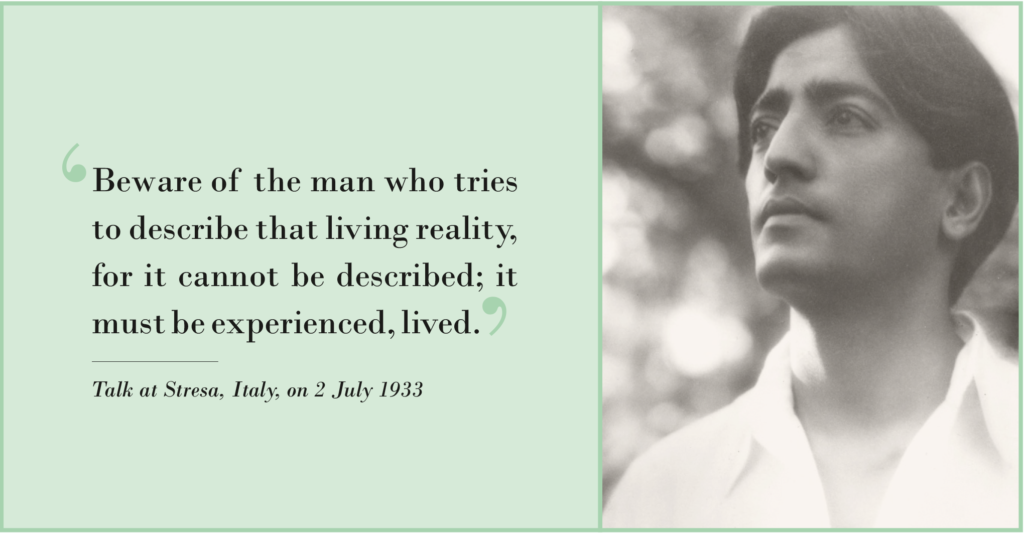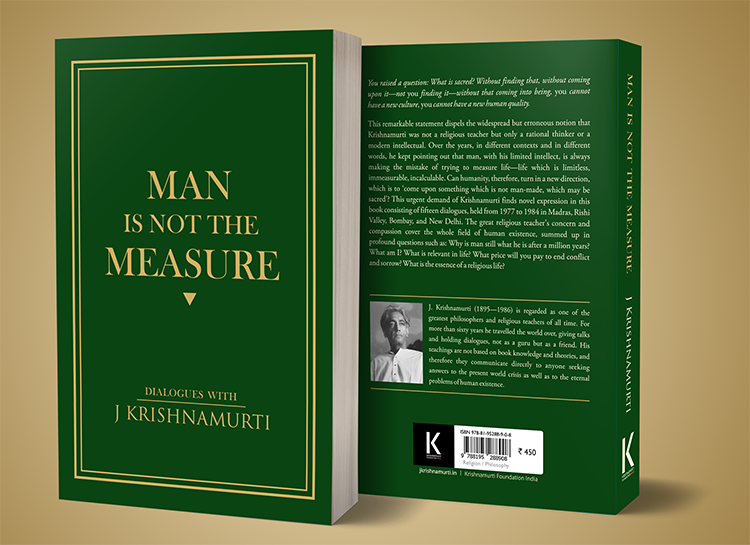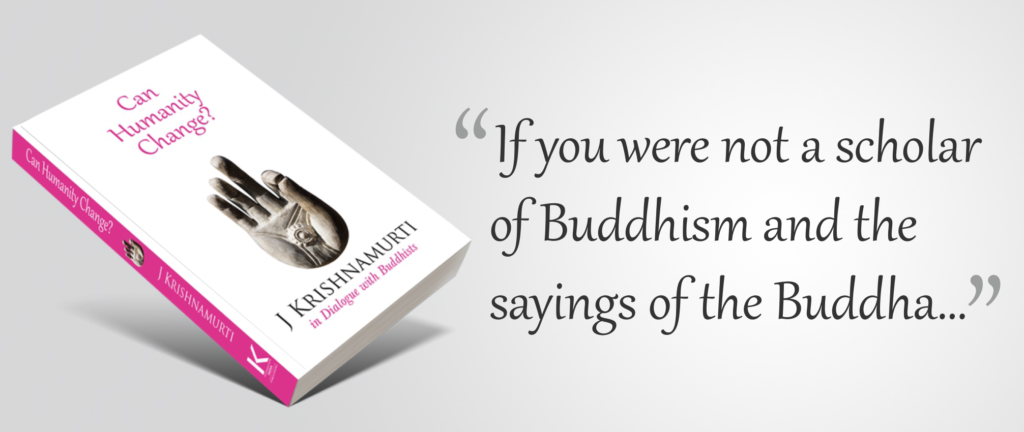Man is Not the Measure consists of fifteen dialogues Krishnamurti held from 1977 to 1984 in Madras, Rishi Valley, Bombay, and New Delhi.
You raised a question: What is sacred? Without finding that, without coming upon it—not you finding it—without that coming into being, you cannot have a new culture, you cannot have a new human quality.
This remarkable statement dispels the widespread but erroneous notion that Krishnamurti was not a religious teacher but only a rational thinker or a modern intellectual. Over the years, in different contexts and in different words, he kept pointing out that man, with his limited intellect, is always making the mistake of trying to measure life—life which is limitless, immeasurable, incalculable. Can humanity, therefore, turn in a new direction, which is to ‘come upon something which is not man-made, which may be sacred’? This urgent demand of Krishnamurti finds novel expression in this book. His concern and compassion cover the whole field of human existence, summed up in profound questions such as: Why is man still what he is after a million years? What am I? What is relevant in our life? What price will you pay to end conflict and sorrow? What is the essence of a religious life?
Human beings like to believe that they are the centre of this universe, and this philosophy can be traced back to the 5th century BC Greek thinker Protagoras, who said in his famous words: ‘Man is the measure of all things, of the things that are, that [or how] they are, and of things that are not, that [or how] they are not.’ He gave the most succinct and striking expression to the essence of these purely human-centred philosophies. The Epicureans in Rome, as well as the Chárvakás, Lokayatás, and Ájivikas of India, propagated the view that there is no transcendental dimension of existence which is the source of truth, goodness, and beauty. For them, human judgement and reason alone were the arbiters of all values.
Twenty-five centuries after Protagoras, this philosophy stands challenged by Krishnamurti’s insight that man is not the measure. This statement—perhaps the one of its kind in Krishnamurti’s own literature—came in a most unusual context. In December 1984, the well-known film director G. Aravindan was in Rishi Valley to do his documentary, The Seer who Walks Alone, and a brief dialogue with Krishnamurti was specially arranged for this purpose in the school auditorium. There was nothing new in the opening question—it was about the crisis in the world and what can bring about a social change. It was a question that Krishnamurti had fielded all his life, and his listeners could perhaps almost anticipate his answer. But Krishnamurti chose to come out with a most unexpected and remarkable observation: ‘I think man has to change himself because he is not the measure of himself. He is not the measure of man.’
In making such a statement, Krishnamurti was not deliberately trying to repudiate an old philosophical system or establish a new school of thought. In fact, Krishnamurti had no use for any school of thought, which he would dismiss as having only academic value and, therefore, being irrelevant to one’s actual life. Going by his own statements, Krishnamurti had not read Protagoras or, for that matter, any other philosopher, ancient or modern, Western or Eastern. His insights were arrived at by his own understanding of human life and were a direct expression of that intelligence which, he maintained, is outside the realm of thought, knowledge, intellect, and reason. That intelligence is measureless to man and is therefore sacred.
What does the title of the book mean? The answer—what Krishnamurti means by the words measurable and immeasurable—is given in his own words in the form of brief quotations taken from his public talks and presented as a Prologue. The dialogues are arranged not chronologically, but in such a way that the reader goes from simple themes to the more profound ones. It is hoped that those who have read Krishnamurti’s other small group discussions, found in books such as Tradition and Revolution, Explorations and Insights, Fire in the Mind, and Don’t Make a Problem of Anything will welcome this book as one that firmly establishes him as one of the greatest religious teachers of all time.





